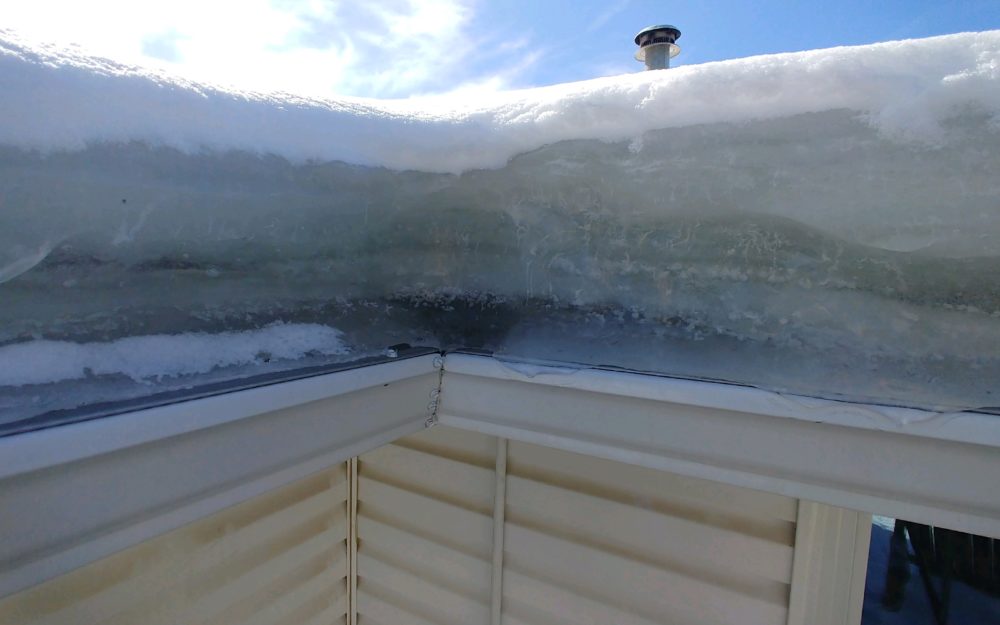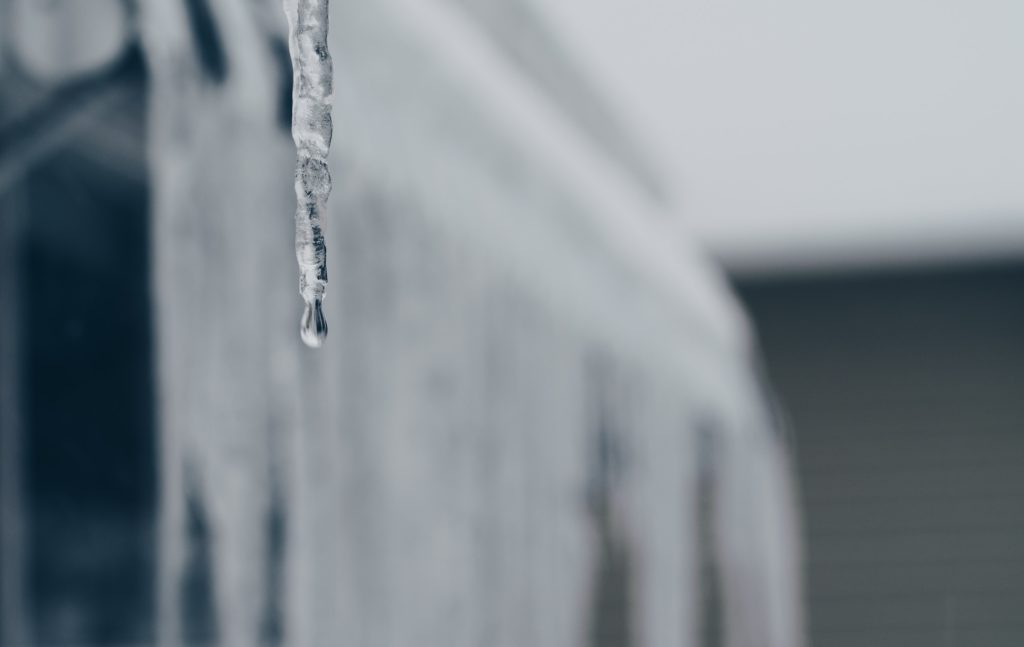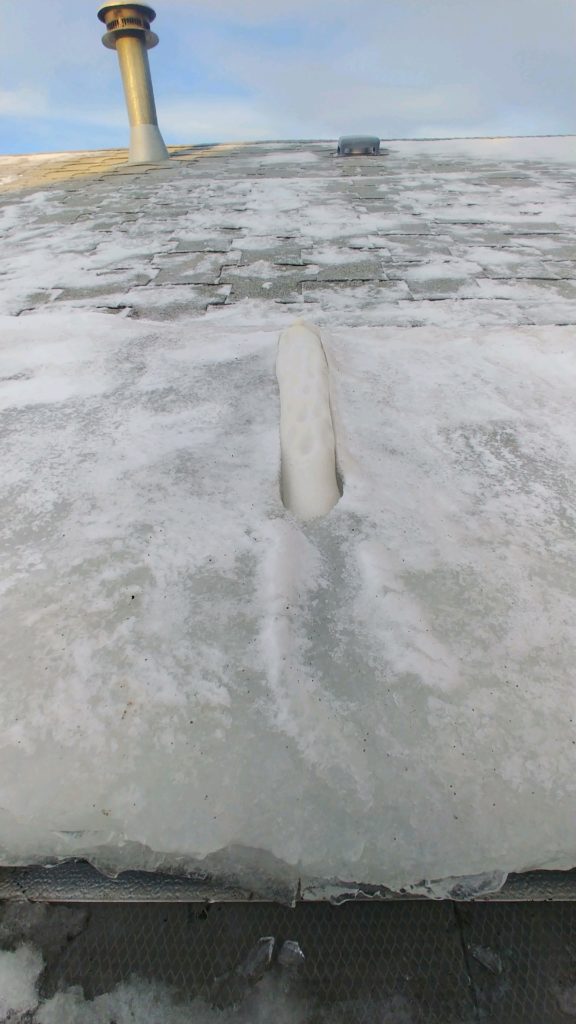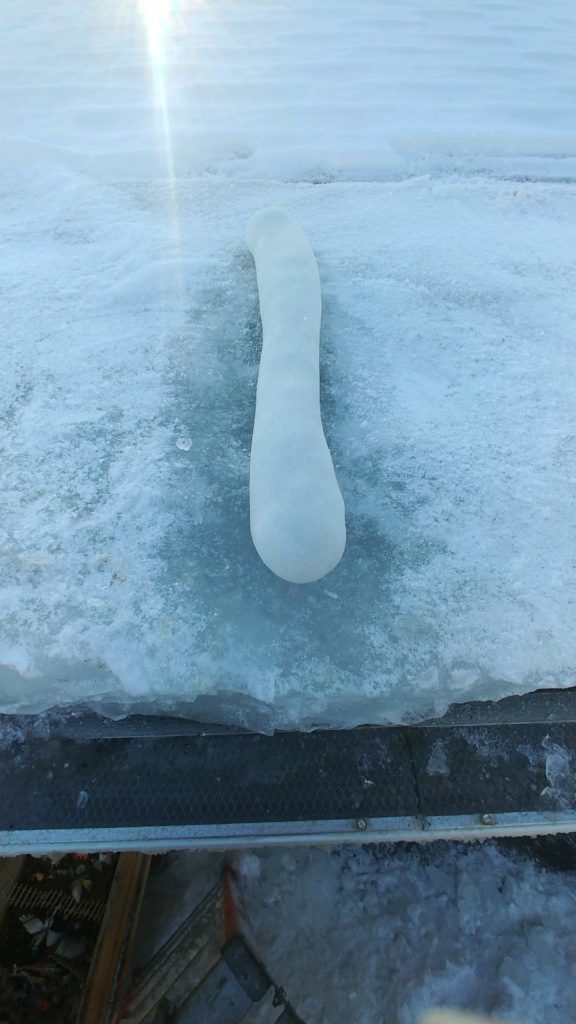
As I’ve been driving around Riverton and Lander the last few days, I’ve noticed a BIG problem with a lot of homes – ice dams.
This time of year, ice dams can be really common with the warmer temperatures melting off all that snow that’s been around since Thanksgiving.
But ice dams form for reasons other than rapidly rising temperatures. Let’s take a closer look at why ice dams form and what you can do to stop them.
Why Do Ice Dams Form?

According to the experts, ice dams form because snow melts and then refreezes. The cause of this is warm air inside the attic of your home, which then transfers through the roof and begins to melt the bottom layers of snow.
As the snow melts, water runs down the roof to the roofline, where it refreezes along the edge of the eave. Since the eave is exposed underneath, it’s much colder, so the water refreezes.
This happens over and over again, creating a thick layer of ice along the edge of the roof.
This ice is called a dam because it literally blocks water behind it from running off the roof as it should.
Why are Ice Dams a Problem?
Aside from the obvious risk of a big chunk of ice hanging over your head, ice dams are extremely heavy. All that weight can cause significant damage to your gutters and even to your roof. Many homeowners have had to replace gutters because ice dams have dislodged in warmer weather, slid off the roof, and brought the gutter with them.
Additionally, with all that ice build-up on your roof blocking water from dripping harmlessly into the gutter, the water has to go somewhere. Often, that means it penetrates through the roof, causing damage to the roofing material underneath your shingles or metal roof.
In some cases, the water damage can be so severe that it causes damage to the interior of the home. At that point, not only do you have damage to your roof and gutters to worry about, but you also have to fix the water damage inside your home too.
How to Prevent Ice Dams

Sometimes you can prevent ice dams on your own by raking built-up snow off your roof. The less snow that’s on the roof, the less water there will be to freeze and refreeze to create an ice dam.
But sometimes there’s just too much snow to rake off or your roof is too tall. Then what?
One option is to use what’s called a calcium chloride sock.
Calcium chloride is the same as the ice melt you put on your sidewalk or driveway. But instead of sprinkling it on your roof, you fill a long sock with it, tie up the end, and place it on your roof, as shown above and below.

Just place the sock on the roof so it lays vertically over the dam. Typically, you lay the sock close enough to the edge of the roof so about an inch of the sock is actually hanging over the edge. As This Old House notes, doing so melts the ice directly below and creates a channel through which water can run through the dam and off the edge of the roof as it’s supposed to.
Just be sure you use calcium chloride, not rock salt.
Rock salt can not only damage your roof, but it can contaminate the runoff from the roof which can kill plants that live below.
Another option is to hire a professional to take care of the issue.
Some companies, like Phat Foam in Lander, can steam your roof. This creates drainage channels through the ice dam that allows water to drip off the roof’s edge. This is an invaluable service to people that either don’t have the time, ability, or a tall enough ladder to reach the ice dam to rectify the problem on their own.
Ice dams are a part of life in colder climates like Wyoming. The key is to attack the snow on your roof before an ice dam forms. But if it’s already too late and you have ice dams on your roof, use one of the methods described above to take care of the problem.
